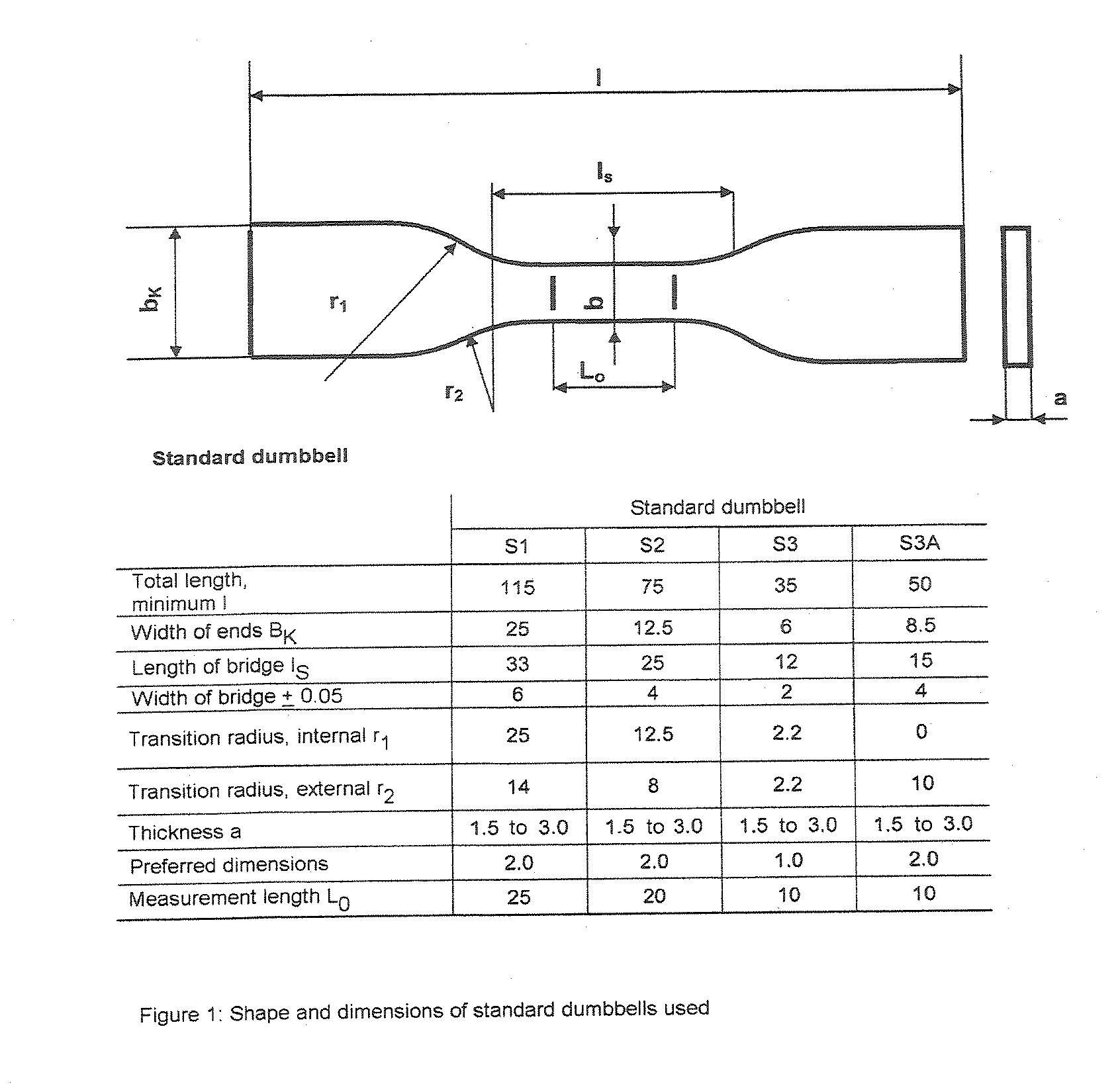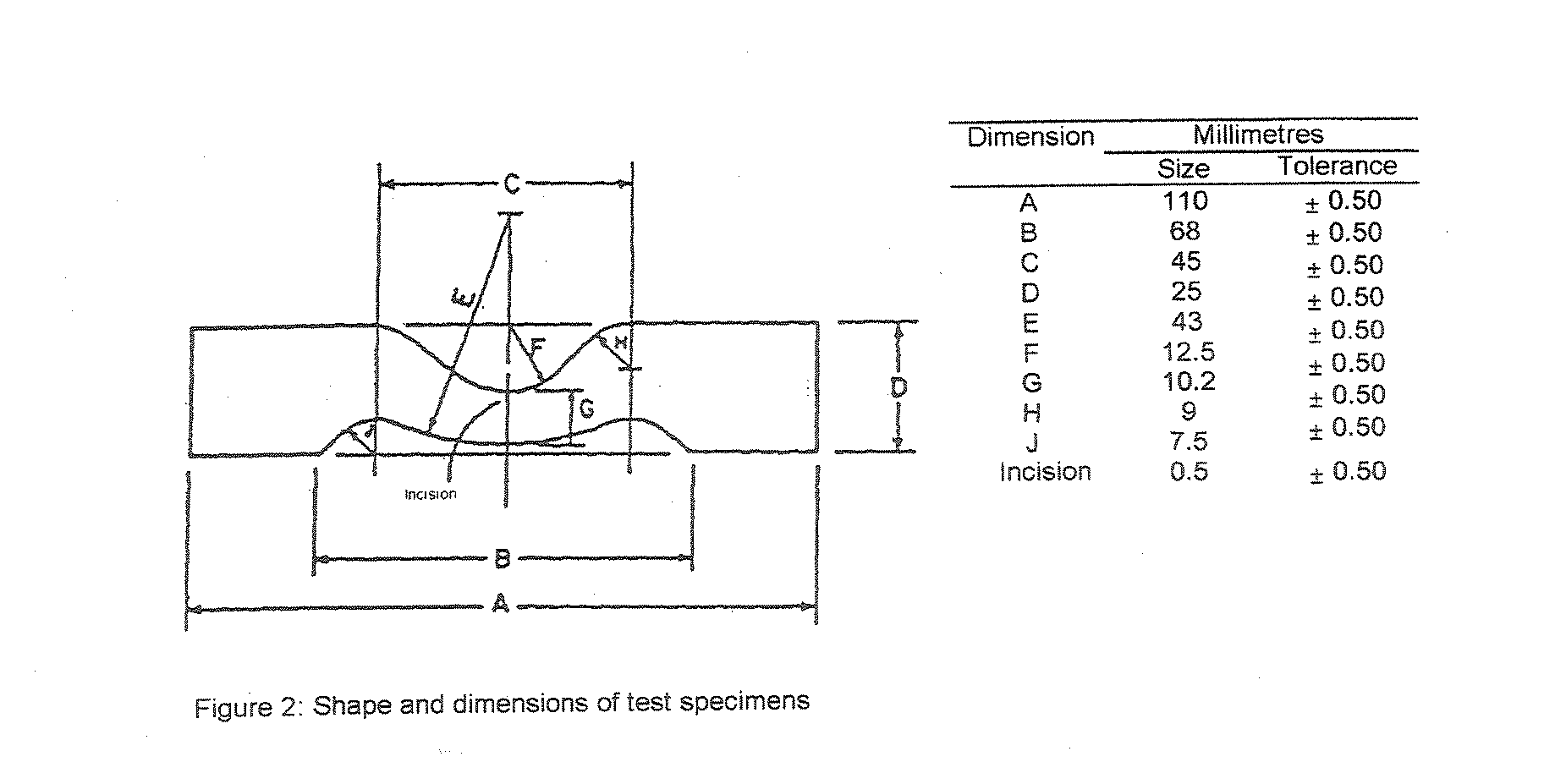Hydrophilic silica for sealants
a technology of silica and precipitation, which is applied in the direction of silicon oxides, silicon compounds, other chemical processes, etc., can solve the problems of rtv1 silicone rubber, silicas have to undergo a very long thermal treatment at very high temperature, and the use of hydrophilic silicas has not been done to da
- Summary
- Abstract
- Description
- Claims
- Application Information
AI Technical Summary
Benefits of technology
Problems solved by technology
Method used
Image
Examples
example 1
[0170] A 2 m2 precipitating vessel (diameter 160 cm) with inclined base, MIG inclined-blade stirrer system and Ekato fluid shear turbine was charged with 1500 l of deionized water and this initial charge was heated to 90° C. After the temperature had been reached, and over a period of 52 minutes, water glass was metered in at a rate of 3.52 kg / min, and sulphuric acid was metered in, at a rate of 0.47 kg / min with stirring until the viscosity rise point was reached. The rate of metering of sulphuric acid must be corrected if appropriate so that during this time a pH of 8.5 was maintained. Subsequently the metering of water glass and sulphuric acid was interrupted for a period of 90 minutes. Within this time the precipitation suspension was stirred at 90° C. Following the interruption, water glass was added to raise the pH to 10 over the course of 20 minutes, and the pH was maintained at this level for a period of 60 minutes. During this time the precipitation suspension was stirred fu...
example 2
Performance Tests
[0185] 2.1 Preparation of Acetate-crosslinking RTV-1K Silicone Sealants with Precipitated Silicas
[0186] The amounts required for preparing the formulation below are indicated in Table 2. In the course of preparation, cooling with mains water should be carried out so that the formulation does not undergo warming substantially beyond room temperature. Preparation takes place at room temperature and at a relative humidity of 40% to 60%.
[0187] A planetary dissolver (from H. Linden, type LPMD 2SP) equipped with a 2 l stirring vessel with jacket, cooling water connection and independently controllable planetary drive and a dissolver drive was charged with silicone polymer, plasticizer (silicone oil) and crosslinker and this initial charge was homogenized for 1 minute at a speed of 50 min−1 (planetary drive) and 500 min−1 (dissolver drive). Then the catalyst was added and the batch was homogenized for 15 minutes under an N2 atmosphere with the same planetary and dissolv...
PUM
| Property | Measurement | Unit |
|---|---|---|
| density | aaaaa | aaaaa |
| temperature | aaaaa | aaaaa |
| temperature | aaaaa | aaaaa |
Abstract
Description
Claims
Application Information
 Login to View More
Login to View More - R&D
- Intellectual Property
- Life Sciences
- Materials
- Tech Scout
- Unparalleled Data Quality
- Higher Quality Content
- 60% Fewer Hallucinations
Browse by: Latest US Patents, China's latest patents, Technical Efficacy Thesaurus, Application Domain, Technology Topic, Popular Technical Reports.
© 2025 PatSnap. All rights reserved.Legal|Privacy policy|Modern Slavery Act Transparency Statement|Sitemap|About US| Contact US: help@patsnap.com



